We are finally starting to put the pandemic behind us, so we are left with a different world. One of the things that have changed around the globe- people are now much more used to shopping online. This means you can now start your own Amazon private label business. The idea has been adopted by entrepreneurially minded individuals for years. But right now, it’s a more attractive process than ever.
Selling a private label business on Amazon means you create your own brand, find a product, manufacture it, and sell it on Amazon either using their FBA system or fulfilling the orders yourself. The great thing about this business model is that you can organize and manage everything from the comfort of your own computer, while Amazon takes care of all overheads. We will get into the exact steps that will take you from zero to selling your own product on Amazon.
1. Product Research
There are some best practices when it comes to selling private labels on Amazon and managing your store. You might be able to apply all of them perfectly and still fail to make a profit because the product you picked doesn’t have room to grow in the market. This is why you should take your time researching your first product. You are not really limited or have any deadlines when launching your first product. It’s only after you find it that things start to move in time increments.
As an Amazon seller, develop your own unique criteria when looking for a new product to add to your catalog. Experienced sellers have more precise and refined criteria due to their experience. For a beginner, it’s best to follow the following few requirements for your first product so that things don’t get too complicated from the start:
Selling price between $20 and $40
When selling on Amazon, you have to pay fees. It’s a vital component that goes into your margins when calculating profit. If the selling price is too low, the margin will be too slim, and if the selling price is too high, you will most likely be selling a product that is too complex and challenging for a beginner.
No moving parts
To save on quality and to avoid risking higher return rates or possible damage in transport, it’s best to avoid selling items that are mechanical in nature use electric wiring or software.
Not too heavy and not too bulky
The fees are in part related to the weight and dimension of the product you are selling, which is factored into your shipping costs.
High demand – low competition
Ideally, you will find a niche with high demand and minimal competition. However, it’s most likely not going to be straightforward to find such a niche, and finding the demand for any product will be very difficult also. This is why it’s wise to use some advanced market intelligence software, much like the AMZScout PRO Chrome Extension.
If you were to just simply browse Amazon looking for an interesting niche that you might want to launch a product in, you wouldn’t necessarily make a well-calculated risk. After all, this is business, and there are no guarantees of success. Simply browsing Amazon will not give you all the information you need. This is why we need to use sophisticated Amazon marketing intelligence software, such as the AMZScout PRO Chrome Extension.
When it comes to product ideas, you can use the Amazon Trend Report, which is publicly available. You can browse best sellers in each category. You can also get trend ideas by following social media, paying attention to new interests and lifestyles people adopt, and then finding products that correspond to them. You might also look for trends on Google Trends, which has a tendency to really point out cutting-edge trends. You can clearly see the popularity of each of them.
2. Finding A Supplier
Once you have decided on a product or products you want to launch, it’s time to look for a supplier. Most people turn to Alibaba, and for a good reason. You are very likely to find what you are looking for selling there. But make sure you consider the following things before you settle on a supplier.
MOQ
MOQ or the Minimum Order Quantity. Based on the amount of money you would like to invest into launching this product, you will need to know the minimum order you can place with your suppliers and how ordering in larger quantities affects the price per unit and, eventually, your profits.
Supplier certification
The days of scams and dishonest practices on Alibaba are largely a thing of the past. Alibaba has made an effort to make sure that you trust the company and that you can safely collaborate with its members. A few of the things they have in place to create a safe place for trade are badges, such as gold suppliers, on-site checks, and trade assurance. Most suppliers will post pictures of their facilities and even how much revenue they’ve made with their products. To put it simply, it’s easy to see that a supplier is legitimate.
Communication
Keep in mind that finding a supplier is a long-term relationship, and just as in any relationship, communication is key. Make sure you have a supplier who speaks decent English and can clearly understand you, and you them. ‘Clearly’ is the keyword here. This might be more difficult to find than you think.
3. Brand Design And Packaging
Once you have found a supplier, start your branding process by picking a brand name – ideally one that can have its own website domain that isn’t claimed. This is something you will want to eventually get into the Amazon brand registry, which you should really consider down the line. A brand name on Amazon will help boost your sales if you manage to establish yourself in your niche.
You should look towards outsourcing for this part of the process unless you have a product and graphic design background. Creating a private label basically means creating your own brand where you will need a logo and graphic design for your product packaging. You can find professionals such as PNCLogos to take care of all of this for you.
4. Product Samples And Stress Testing
Now, you have your product and your product packaging, and it’s time to get your new product as a sample for you to examine, test, and potentially make changes to before launch. You should do your best to wear out and break your product to see what its weaknesses are to predict or anticipate potential reasons for returns from customers or negative reviews. You should also use this opportunity to take product photos of the samples.
Ordering your first batch
At this point, you should get your affairs in order with Amazon, get your account set up, and add a new product to your catalog. If you have tested your prototype, you should feel confident ordering your first batch of products and sending them to your designated FBA warehouse. Even though your listing will not be active, you will have a placeholder listing that will only become visible once your items get in stock.
Create your listing
As you are waiting for your first shipment to arrive, it’s time to construct your listing. You need to do deep keyword research and proper SEO with your listing titles, bullet points, and description. Also, it’s time to put up your product images and get everything set up so that you can start selling when your stock arrives.
Start advertising and selling
once you have all your ducks in a row, it’s time to start your journey on Amazon. You need to have a game plan for your Pay Per Click efforts as you are launching since that is basically the only way to grow your organic rankings. It’s also a continuous process that all your potential growth depends on.
Conclusion
Selling private labels on Amazon is not too complicated or expensive. You can start your own business with as little as $1,000. What is really challenging is doing it right and making the right decisions. Maybe even more important is learning from mistakes and adapting to particular circumstances of your niche and market. Getting started is easy. Getting good is hard. Good luck sellers!




